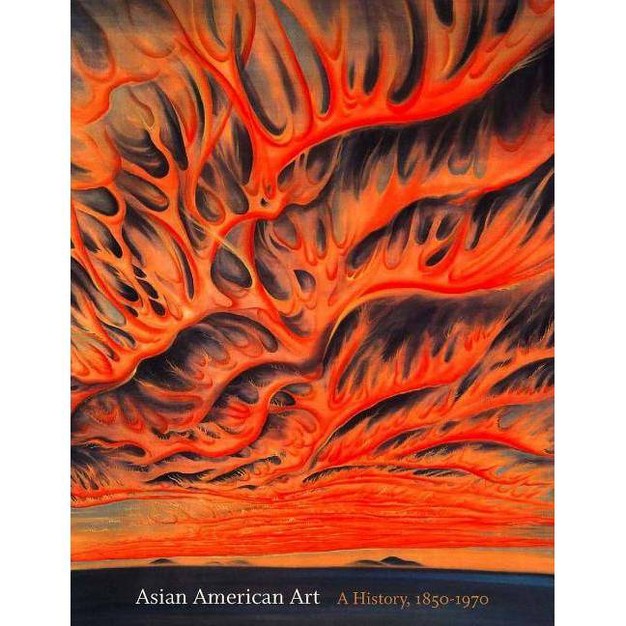About the Book
Asian American Art: A History, 1850-1970 is a first-ever survey exploring the lives and artistic production of artists of Asian Ancestry active in the United States before 1970, and features ten essays by leading scholars, biographies of more than 150 artists, and more than 400 reproductions of artwork and photographs of artists, together creating compelling narratives of this heretofore forgotten American art history.Book Synopsis
Asian American Art: A History, 1850-1970 is the first comprehensive study of the lives and artistic production of artists of Asian ancestry active in the United States before 1970. The publication features original essays by ten leading scholars, biographies of more than 150 artists, and over 400 reproductions of artwork, ephemera, and images of the artists.
Aside from a few artists such as Dong Kingman, Yasuo Kuniyoshi, Isamu Noguchi, and Yun Gee, artists of Asian ancestry have received inadequate historical attention, even though many of them received wide critical acclaim during their productive years. This pioneering work recovers the extraordinarily impressive artistic production of numerous Asian Americans, and offers richly informed interpretations of a long-neglected art history. To unravel the complexity of Asian American art expression and its vital place in American art, the texts consider aesthetics, the social structures of art production and criticism, and national and international historical contexts.
Without a doubt, Asian American Art will profoundly influence our understanding of the history of art in America and the Asian American experience for years to come.
Review Quotes
Ground breaking and historic are terms often overused and overstated for the works they purport to describe. Both, however, are appropriate for this outstanding volume, which introduces readers to the breadth and depth of Asian American fine artists. This single work will spur enormous growth in the many fields it directly impacts, including American Studies, Art History, Asian American Studies, and American History. Another overused term: A must read. In this case, understated. --Franklin Odo, Director, Smithsonian Institution Asian Pacific American Program
In an organized and heartfelt way, it recognizes art that once commanded little respect from any quarter of mainstream American, as more than simply Oriental. --Nichi Bei Times
To my knowledge, there are few books about Asian American visual art before 1970. Asian American Art: A History, 1850-1970 brings this art into view, letting readers consider it from various perspectives. This valuable collection will surely stimulate discussion and new research and writing. It brings together many of the scholars best qualified to discuss Asian American art history.--Elaine Kim, Professor Asian American Studies, University of California, Berkeley
...a must-read for specialists in American ethnic history.... It will surely remain a classic work in Asian American studies and--it is to be hoped--in American art history.--Greg Robinson, lUniversité du Québec Montréal, Journal of American Ethnic History
A dazzling collection of images and essays which recuperates a century of Asian American artistic production, Asian American Art: A History, 1850-1970 provides us, at long last, with a comprehensive and foundational work. More than a convenient ìbridge, î the hundreds of images reproduced here explode the static and tired categories of ìWesternî and ìEasternî art. Beyond introducing the art and the artists in depth and in context, the essays in this volume stand as a brilliant exploration into the historical meaning of Asian American art. This book challenges the reader to re-visualize American art and re-imagine American culture.--Robert G. Lee, Brown University
Here are artists and work that have long been lost, forgotten, and in some cases deliberately hidden. I was impressed by the comprehensive, thoughtful, insightful, and sometimes provocative approach taken in the essays, but to see the art itself! We see the breadth and range of experience, styles, and obstacles both artistic and personal. What is western? What is eastern? How did citizenship, internment, or discrimination affect these artists? Asian American Art faces these questions and beyond.--Lisa See, author of Snow Flower and the Secret Fan and Peony in Love
I congratulate the team that has devoted years of work to this remarkable recovery of Asian American art making. Every library in the country should have this art history book on its reference shelves for its names, its biographies, its reproductions, and its fresh and inspirational stories of courage and dedication.--Wanda M. Corn, Professor Emerita, Stanford University
About the Author
Gordon H. Chang is a professor of history at Stanford University and codirector of the Stanford Asian American Art Project. He is the author of many books and essays, including Friends and Enemies: The United States, China, and the Soviet Union, 1948-1972 and Morning Glory, Evening Shadow: Yamato Ichihashi and His Internment Writings, 1942-1945. Mark Dean Johnson is a professor of art at San Francisco State University and co-director of the Stanford Asian American Art Project. He has collaboratively organized exhibitions such as Chang Dai-chien in California and With New Eyes: Toward an Asian American Art History in the West, and conferences including Expanding American Art History to Reflect Multiethnic Diversity. He is also the editor of At Work: The Art of California Labor. Paul J. Karlstrom, former West Coast regional director of the Smithsonians Archives of American Art, writes about modern and contemporary art in the United States. He is the editor of On the Edge of America: California Modernist Art, 1900-1950 and has contributed to major studies of Diego Rivera, Jacob Lawrence, and Yun Gee.Dimensions (Overall): 10.94 Inches (H) x 8.62 Inches (W) x 1.58 Inches (D)
Weight: 5.62 Pounds
Suggested Age: 22 Years and Up
Number of Pages: 576
Genre: Art
Sub-Genre: American
Publisher: Stanford General Books
Theme: Asian American
Format: Paperback
Author: Gordon H Chang Mark Johnson Paul Karlstrom
Language: English



Comment